When people think of Sudan, they will often think of the conflict in Darfur and people living in IDP camps, without really understanding what life in an IDP camp is like. Since moving to Sudan almost 2 years ago, I’ve visited several IDP camps in North and South Darfur. I can still remember my first visit, the massive scale of the camp both in terms of area and number of people, the awful stories of people being forced from their homes, the children growing up with no clear future and the incredible individuals in the international community who were trying to support the residents. I was trying to explain this to a friend when I was at Glastonbury Festival, back to the UK on leave. There is obviously no real comparison between the camps I’ve visited in Darfur and Glastonbury, however I realised that for my friend being able to relate it to where we were might help them to understand the issues. I’ve used this blog to explain in more depth where the comparison works and where it doesn’t.
In some areas the comparison works quite well…
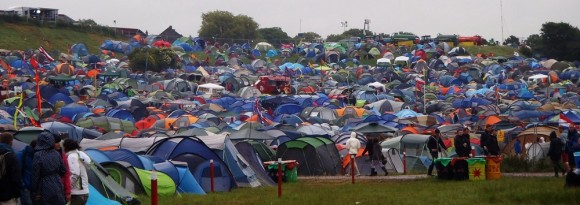
Number of people - Last September I visited Zam Zam camp in North Darfur, which is the largest IDP camp (pdf 1.45mb) in Sudan with 160,000 residents. Glastonbury sells 135,000 tickets and there are about 38,000 staff passes which means about 173,000 people on site. This means that there are 13,000 people more at Glastonbury than at Zam Zam. However there are a total of 1.4 million IDP’s across Darfur this is about 8 times the number of people at Glastonbury, and about half the population of Wales.
Water – Glastonbury has built two on-site, underground reservoirs to provide the festival with 11 million litres of water over the 5 days of the festival. This is about 13 litres of water per person per day, which is the same as the people in Kalma get. However the average person in the UK uses 150 litres of water per day and the humanitarian guidelines are at least 15 litres per person per day for drinking, cooking and personal hygiene. Oxfam America also works on access to water in the camps, when I visited there were large problems with the water supply because of the fuel shortages, meaning that the water pumps, which normally ran for a few hours a day were not able to run every day and that there were often large queues for water.
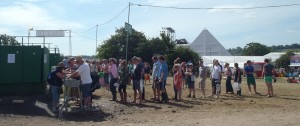

Sanitation (Toilets) - This can be a favourite subject of people at Glastonbury, Are there queues? Do they smell? One of the reasons Glastonbury took a year off last year was because there wasn’t enough portable toilets for both the Olympics and Glastonbury. According to the Glastonbury website there were 4800 toilets a mixture of compost toilets, portable toilets and long drops this is about 36 people per toilet. In Kalma camp in Darfur there are 8,000 toilets, which is about 11 people per toilet, although in some areas only about 20% of the toilets are in good condition.
The international community works hard to make sure that people in IDP camps get appropriate support. The humanitarian guidelines are ‘One toilet for a maximum of 20 people should be the target. Where there are no existing toilets, it is possible to start with one for 50 people and lowering the number of users to 20 as soon as possible.’ I visited Oxfam America who provide toilets for a third of the camp, they showed us the work they do with the community deciding where to put toilets and helping to maintain them. DFID is supporting them in this work through the Common Humanitarian Fund.
In other ways there is no real comparison ….
Glastonbury is only for 5 days every year and it takes about every 4th year off to let the land recover. Visiting IDP camps I met people who had been there for 8 or 9 years as well as people who had arrived in the last few days or weeks because of the increase of conflict in Darfur this year. OCHA estimates that 280,000 people have been displaced by this recent conflict. The new arrivals I spoke to had all travelled for several days and sometimes weeks to get to the IDP camps, often on foot. Most hadn’t managed to bring anything with them from their homes and had clearly been through an incomprehensible experience. People arriving at Glastonbury have either driven themselves or arrived on public transport, in the first few days there are people streaming onto the site with all of their belongings for the week, including tents and food, often doing several trips to their cars for more belongings. Having adequate shelter was one of the main concerns of new arrivals at Kalma, the people we met had makeshift shelters built of anything they could find and were worried about how it would hold up during the rainy season.
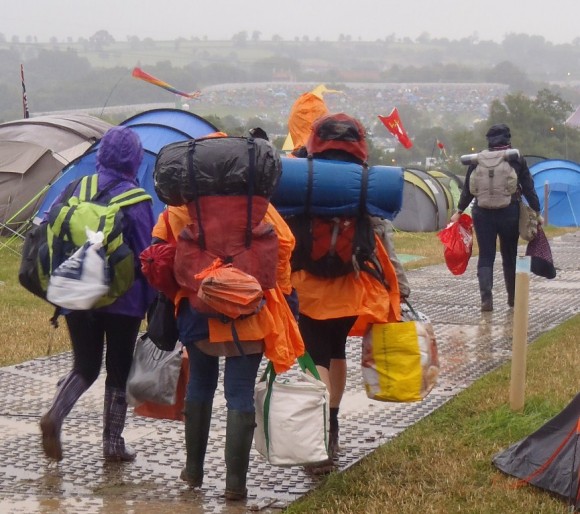
Things to do - Glastonbury Festival for Contemporary and Performing Arts to give it its full name is renowned for the diversity of their acts. You could watch bestselling bands, dance the night away to DJ sets, participate in political discussions, watch theatre or cabaret, or much more. At Glastonbury there are lots of things for children to do, some of my friend’s volunteered running fun and educational activities in the Kids field. I visited Zam Zam last year with Plan and visited some of the schools and child friendly spaces that they run in Zam Zam. These are makeshift classrooms but where the dedication of the teachers is providing the children in the camp with a valuable education. However once the children finish school there are limited opportunities for them to find jobs in the camp.

Food - There are over 250 food facilities on site at Glastonbury, with a wide array of excellent foods to enjoy, with most meals costing about £5 - £8. Some camps run a food ration scheme, where each household is given a set amount of food each month with no choice over what they receive. In Ottash Camp in South Darfur, they have moved to a voucher scheme. This means IDPs are given 30SDG per month, about £4, which can be exchanged for 20 different commodities. The World Food Programmewho run the scheme has worked with traders to establish markets in camps. The people we met were pleased with the ability to have choice but also concerned at the value of the voucher is less than the value of a full food ration. When you would struggle to buy a full meal at Glastonbury for the amount of money people in IDP camps have for food for a month it puts our food choices in perspective.
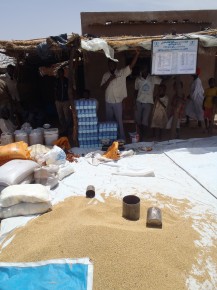
Medical Facilities - There was news at Glastonbury this year when a couple gave birth to a baby girl during the festival and there is a high level of medical facilities offered including x-ray, physiotherapy and emergency dental services. Whilst a birth at Glastonbury is considered News, babies are born every day in IDP camps. Visiting the Merlin health clinic in Kalma camp we met a woman who had given birth earlier that day, supported by the excellent Merlin midwives. However the conditions that she gave birth in were different from those in the UK or even the facilities at Glastonbury. Merlin also offers health clinics, feeding programmes for malnourished children and ante-natal clinics. The work that Merlin delivers is well needed but isn’t enough to support everyone in the camp and for complex cases they have to send people to Nyala town.
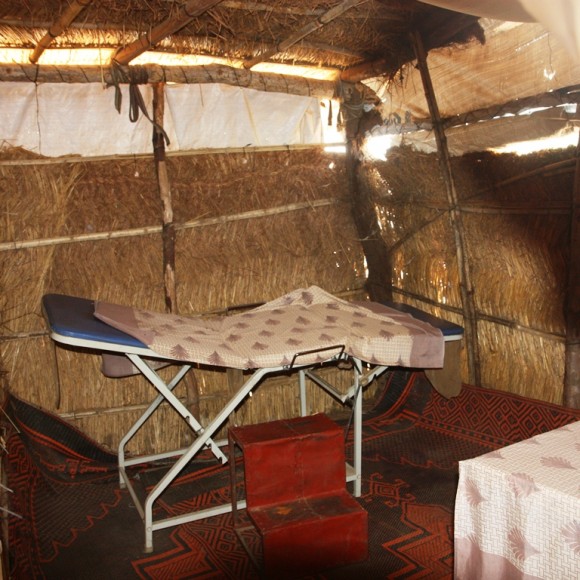
Glastonbury 2013 was an amazing experience, and I’m already making plans to go again next year. By the end I was ready to go home, 6 days of not showering, not using a flushing toilet, being outside every day at the mercy of the weather and being constantly surrounded by people with no space of my own had taken their toll. I was pleased to get back to my parents’ house for a shower, flushing toilet and food not on a paper plate. The work the international community does, in Darfur supporting those who live in camps, is saving people’s lives and improving people’s quality of life. However without an end to conflict in Darfur the people I met will continue to struggle to rebuild their lives. Writing this in Khartoum, I can’t imagine having stayed at Glastonbury for the three weeks since Glastonbury ended. For the people of Darfur some of whom have been in camps since before my first Glastonbury in 2006 and who will be probably still be there next year, life with limited water, shelter, food, and medical facilities is their lives for the foreseeable future.

1 comment
Comment by Hannah posted on
Hi Emily - this is a really great blog post. Really brought to life the harsh realities of what living in a fragile country like Sudan can actually mean to many people. It also reinforces the necessity of DFID Sudan's work to support the families in the camps but also do as much as is possible to help enable a shift towards lasting peace in the country.